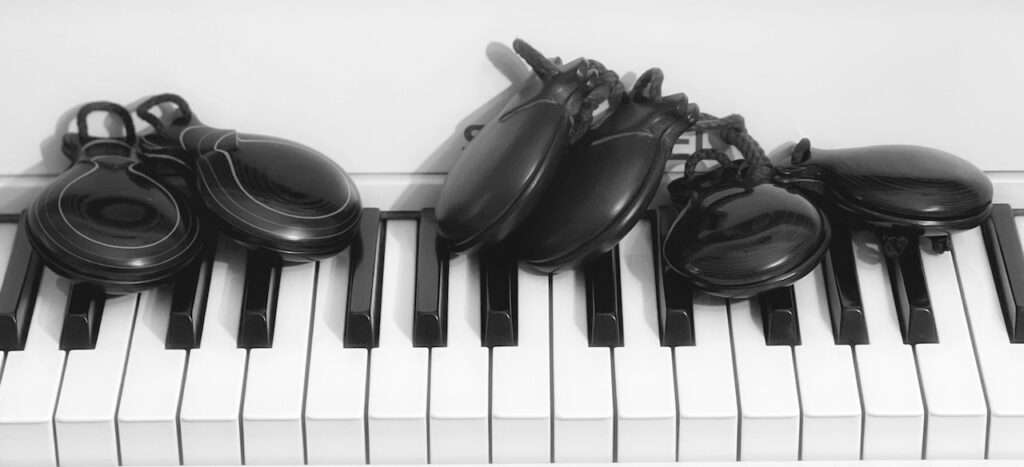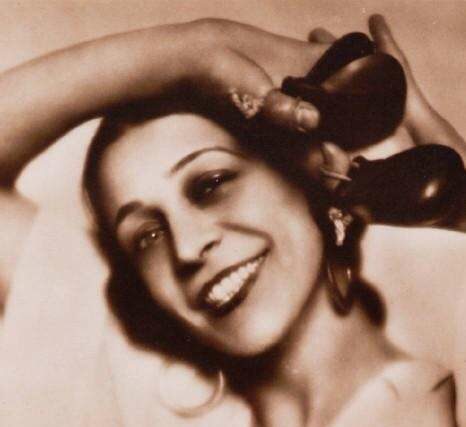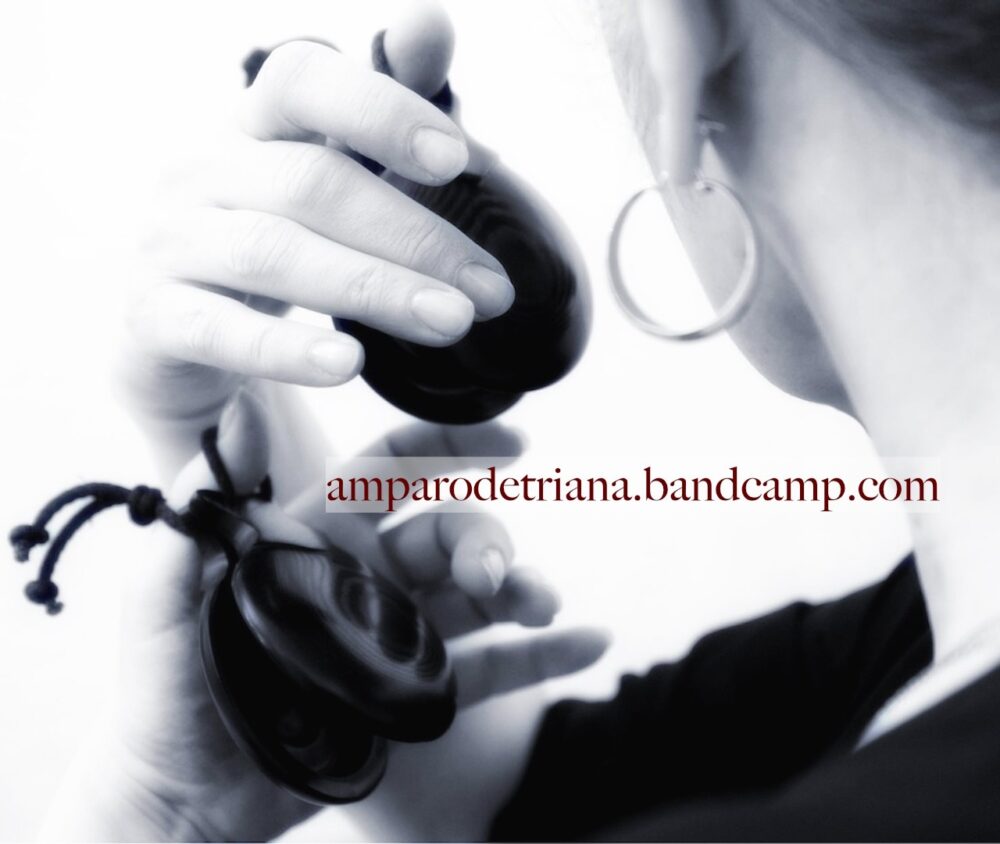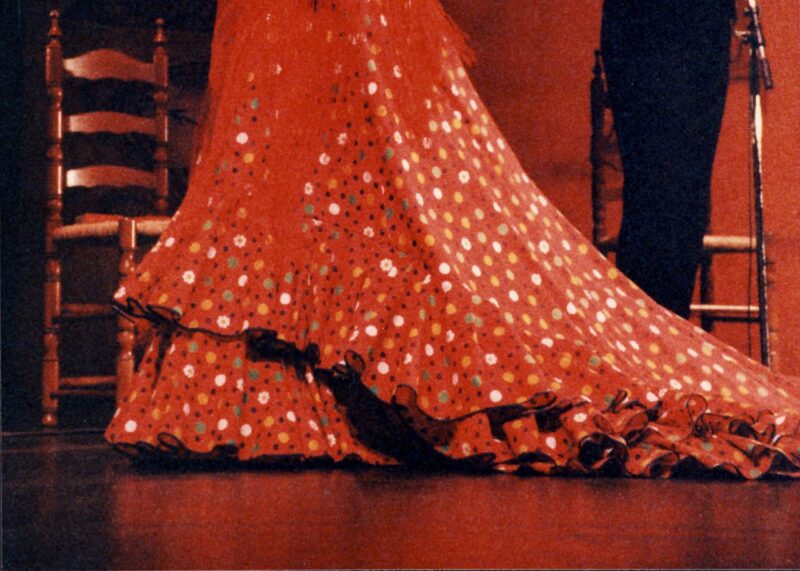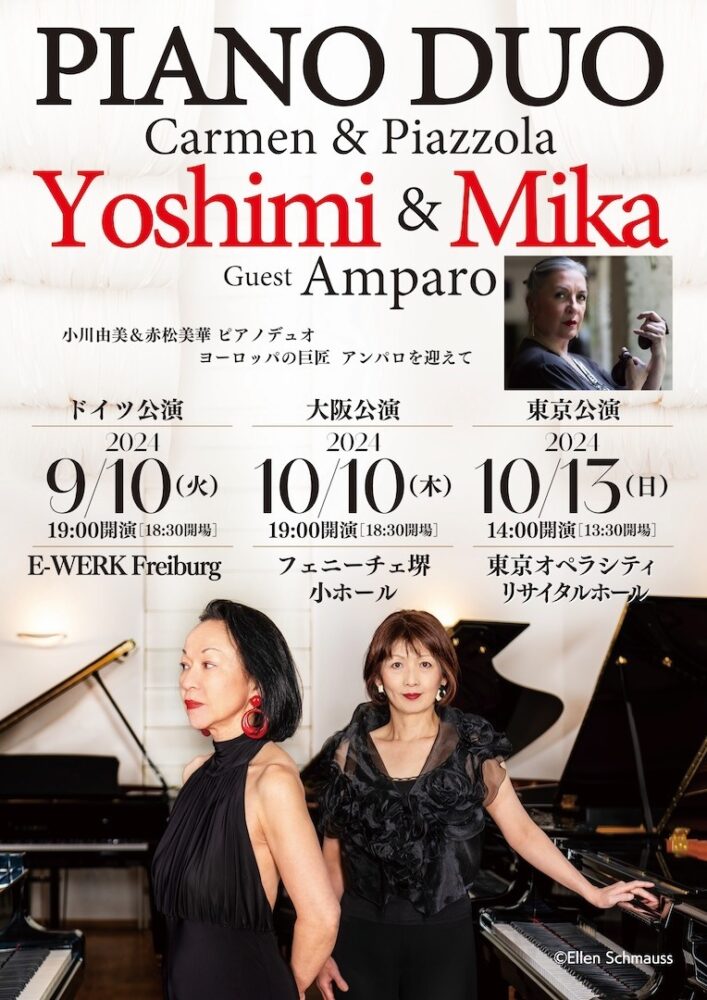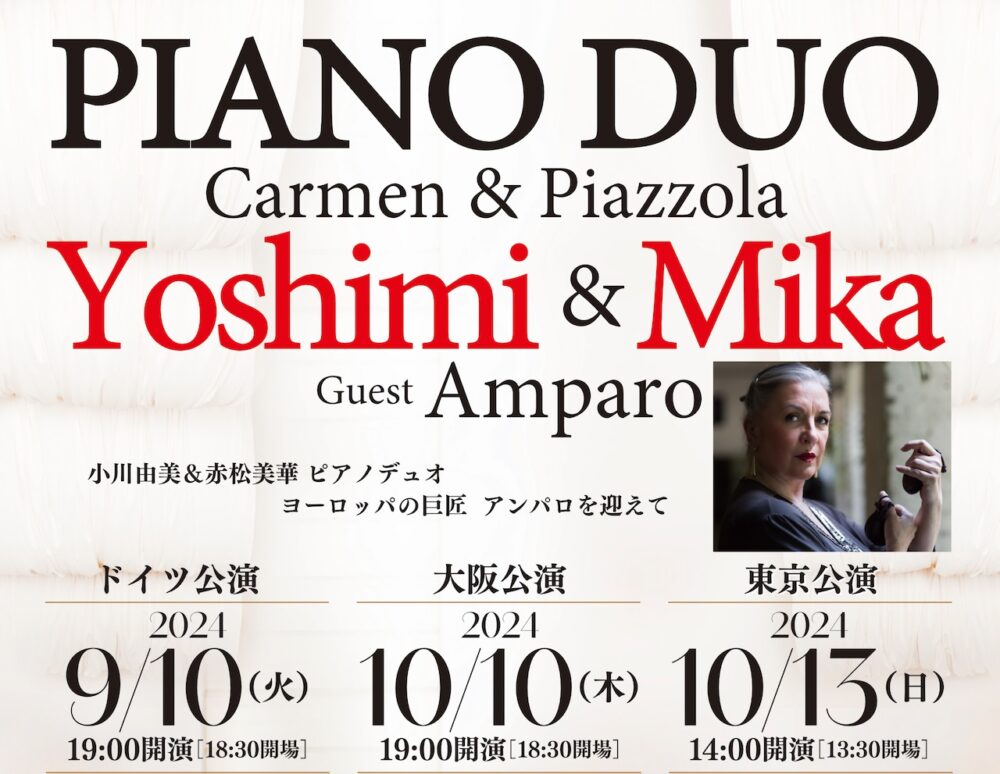The loud, coarse castanets played by the pupils in her parents’ dance lessons were extremely annoying.
She began to intensively study and improve the sound of her castanets as a young girl. Later on she analysed the shape of the castanets and worked with the castanet artisans to develop an optimal shape for a good, precise sound.
She developed an excellent playing technique with high musical standards and began to use the castanets as a concert instrument. In doing so, she revived the Baroque practice of using castanets not only as a rhythmic instrument in dance, but also as a solo instrument, as Concert Castanets.
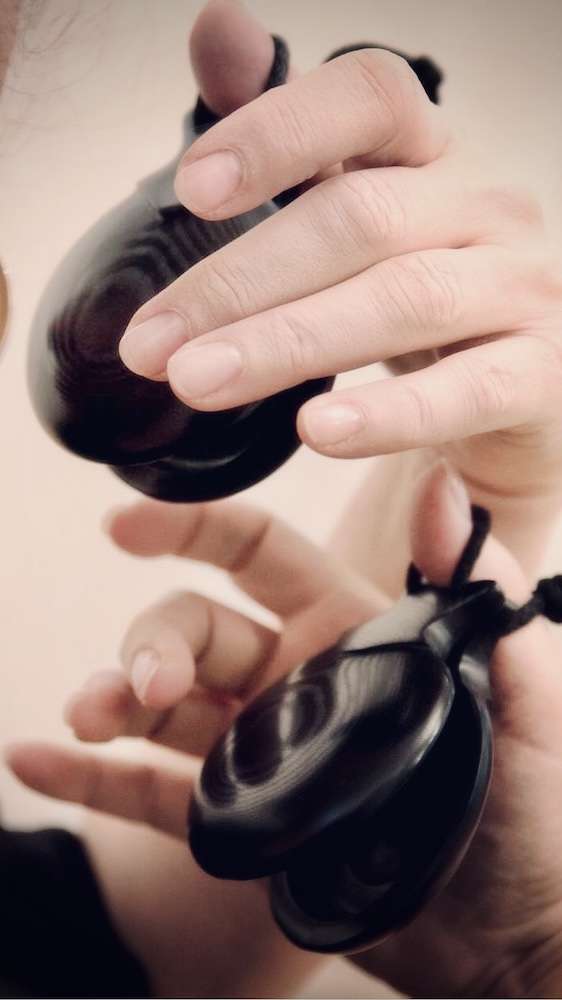
As a dancer, she was unquestionably virtuosic and highly expressive. As a choreographer, she undoubtedly transformed Spanish and Andalusian dance, she built a bridge between neoclassicism and the avant-garde of her time. On her numerous travels, she studied the dances and the corresponding dance costumes and traditional regional costumes everywhere. Her dance creations have elevated Spanish dance to an aesthetic level that was previously unattainable – both in the choreographies and in the costumes and requisites and their inimitable creation. She worked with the important musicians Manuel de Falla, Enrique Granados, Isaac Albéniz and Federico García Lorca.
La Argentina was born in Buenos Aires in 1890 while her Spanish parents were on a tour of South America lasting several years. Her parents were dancers and dance teachers and taught her from an early age. When she was six years old, the family returned to Madrid. In 1899, her father sent her to study at the conservatory in Madrid. There she learned ballet, singing and music theory.
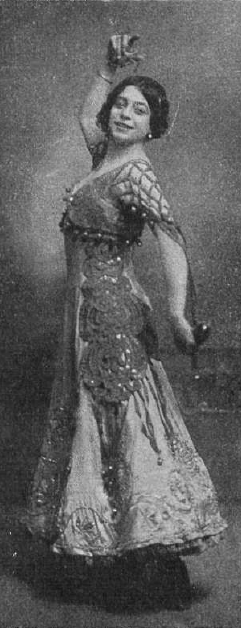
Her father died far too young in 1903. She then began her professional career and switched from ballet to Spanish dance.
At just 14, she made her debut at the Teatro Romea in Madrid and the Teatro Apollo. A group of intellectuals organised a recital for her at the Ateneo de Madrid, which was a resounding success. She was the first dancer to be given the opportunity to perform in this theatre. In 1911, she went to Paris and then toured Germany, Belgium, England and Russia.
She is expanding her repertoire with works by Albéniz and Granados. The 1915 American tour began in Buenos Aires and ended in New York. From 1918, she worked on her first version of Amor Brujo by Manuel de Falla, which was premiered in 1925 at the Trianon Lyrique in Paris. It was a resounding success. International tours followed: Egypt, India, the Philippines, China, Japan, the USA, Czechoslovakia, Austria, Sweden, Italy, England .…
She is considered the first female dancer of her time.
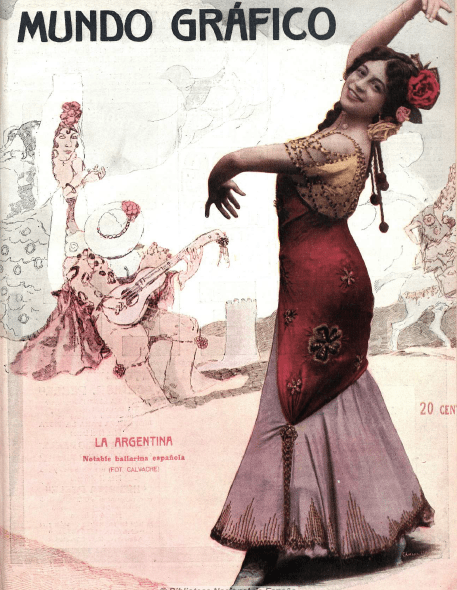
In 1929, she founded the first ballet company for Spanish dance: Compañia de Baile Español and presented it at the Opera Comique de Paris with great success. In Spanish dance history, she thus provided the impetus for the founding of Spanish dance companies. And for the concert castanets, La Argentina marks the beginning of their journey to the concert stages of the world.

In 1936, she had many important performances and galas in Paris and was physically and mentally exhausted. Her doctors prescribed rest. She retired to her villa Miraflores in Bayonne. On 18 July 1936, she died there of a heart attack. She had just heard about the military coup by Franco’s supporters in Spain, suddenly collapsed and said, ‘What is happening to me?’.
The news of her death spread around the world and was on the front pages of the newspapers.
She was called the ‘Goddess of Spanish Dance’, the ‘Queen of Grace’ and the ‘Pavlova of Flamenco’.
